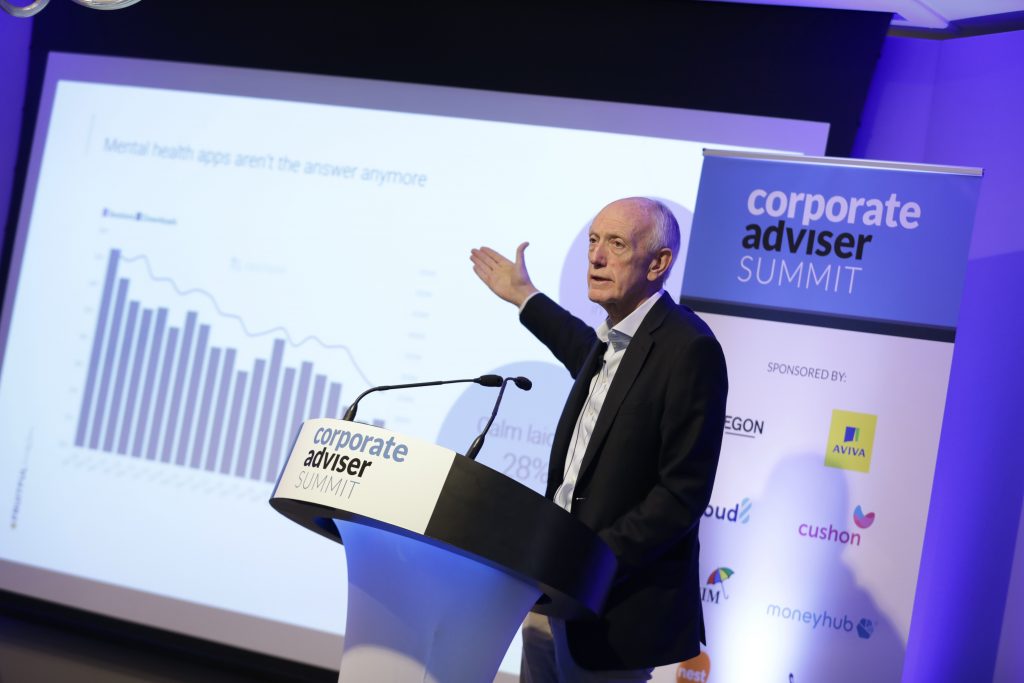Wellbeing programmes are failing to improve the lives of employees, despite employers spending more on a range of different benefit tools.
This was the bleak conclusion given by Fruitful Insights co-founder Mike Tyler at the Corporate Adviser summit. Tyler, who has worked in the employee benefits and wellbeing sector for over 25 years, and is now completing doctoral research in the area said there had been an significant increase in employer expenditure in recent years, but despite this wellbeing outcomes were deteriorating, specifically in relation to mental health.
Tyler said the industry needed to adopt a different approach if it wanted to improve employee wellbeing which should have a more positive impact on productivity in the workplace.
Tyler said the key to this was better data and a clearer strategy, which at its core addressed workplace issues that might be contributing to employee stress and anxiety.
He pointed out that 70 per cent of employers do not have a designated budget for wellbeing, and less than half (44 per cent of employers) have a wellbeing strategy in place. Of those that did just 8 per of those that did measure the return on investment of the various programmes in place. To demonstrate the poor data systems, Tyler pointed out that only 17 per cent of employers were “very confident” that their absence data was accurate.
Diagnosing the current problems Tyler said there was often rush introduce “the intervention du jour” – but a mental health app, or resilience training, without analysing how this fits into an overall strategy.
Tyler says: “Very often employers are looking to fix the problem with an individual without looking at the system or setting that is causing the problem in the first place.”
Tyler highlighted a workplace culture of long-hours, being ‘always on’, via email and digital communications, and lack of control over work demands as being key factors in rising cases of stress and anxiety.
“Employers have to target problems at source and work to resdesign culture and change,” he said. This needed to be woven into a wellbeing strategy that also included a range of approaches to try to prevent problems (such as resilience training and financial education) and wellbeing support and help – which could be covered by PMI and occupational health solutions.
A small number of employers were starting to address this issue, an implement successful wellbeing strategies, but these were few and far between he said.
Tyler added there was often a link between financial wellbeing and job satisfaction. He also called for the government to introduce measures to help improve employee wellbeing. He said he would like to see them implement recommendation made by Dame Carole Black in her 2008 ‘Working for Healthcare Tomorrow’. She suggested that all companies be required to measure and report on employee wellbeing alongside their annual financial statements.
Tyler said: “This would be a relatively easy to implement but could deliver significant improvements.” He pointed out that the incidents of workplace accidents had fallen, due to firm action by the Health & Safety Committee. Similar robust action was now needed to addressed the growing workplace problem of employees stress he said.
